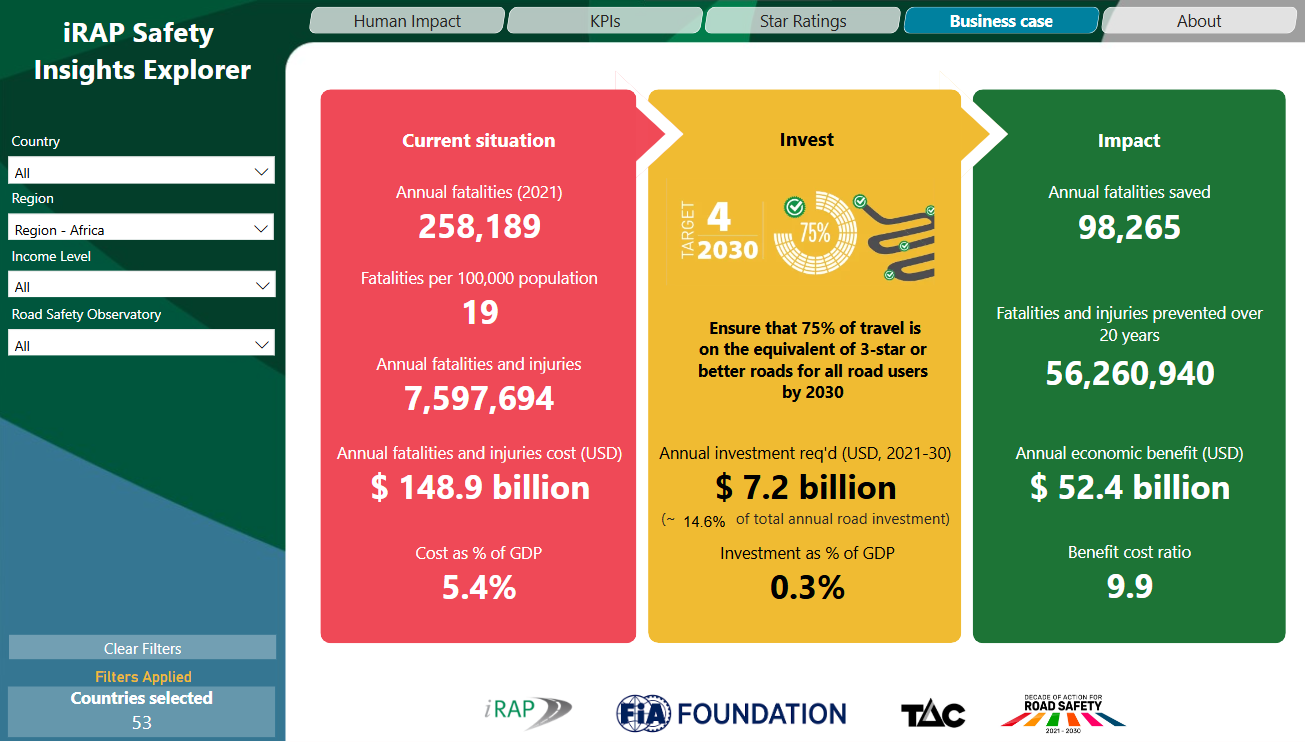The United Nations Economic Commission for Africa (UNECA) 2021-2030 Strategic Directions for Road Safety and African Road Safety Action Plan specifies clear targets and actions for achieving safer road infrastructure based on the iRAP methodology.
Despite efforts at the global and African continental levels, road safety remains a major challenge, particularly in Africa where the risk of death from road traffic injury is as high as 26.6 per 100,000 population compared to 17.0 in South-East Asia and 9.3 per 100,000 population in Europe.
According to the Strategy, in Uganda, road crash fatalities rose by 25.9% from 2,597 to 3,503 between 2007 and 2016; 10 people are killed per day in road traffic crashes, the highest level in East Africa; and 24 people are killed per 100 road crashes in the country. In Cameroon, 16,583 road crashes and 1,500 deaths are recorded on average each year; and the risk of road death per 100,000 population is estimated by WHO at 27.6.

The 2030 Strategy aligns with the Global Plan for the Decade for Action for Road Safety 2021-2030 and UN Targets 3 and 4 which include ensuring all new roads are built to a 3-star or better standard for all road users, and more than 75% of travel is on the equivalent of 3-star or better roads for all road users by 2030.
Key performance indicators relating to infrastructure include:
- Mandatory risk assessment of road infrastructure and safety ratings to be set for new and rehabilitated roads
- Specify a star rating target for all designs linked to each road user, and the desired safety performance standard at the location
- Undertake road safety audits on all sections of new roads (pre-feasibility through to detailed design) and complete assessments using independent and accredited experts to ensure a minimum standard of three stars or better for all road users
- Undertake crash-risk mapping (where crash data are reliable) and proactive safety assessments and inspections on the target network with a focus on relevant road user needs as appropriate
- Set a performance target for each road user group based on inspection results with clear measurable metrics at the road-attribute level (e.g. sidewalk provision), geographic land-use and road corridor level
- Review and update legislation and local design standards that consider road function and the needs of all road users, and for specific zones
- Build capacity for use of infrastructure road safety assessment tools and techniques at the local level
- Eliminate risks along routes frequently travelled by children to school and for other purposes
- Allocate sufficient resources to upgrade existing road infrastructure to incorporate Safe System principles
- Create a fund for road safety, allocate a specific budget and allocate 10% of road infrastructure funding to road safety
The 2030 strategy aims to reduce road traffic deaths and injuries by at least 50 per cent from 2021 to 2030 by enabling targeted actions aligned to the UN targets and SDGs, being coherent in efforts to improve road safety across the continent, performance tracking across countries, and mobilizing resources to improve road safety.
According to iRAP’s Safety Insights Explorer, achieving UN Target 4 for greater than 75% of travel on 3-star or better roads for all road users in Africa by 2030 stands to save an estimated 98,265 lives each year and more than 56 million fatalities and injuries over the 20-year life of road treatments with an economic benefit of USD$52.4 billion – nearly $10 for every $1 spent.



















